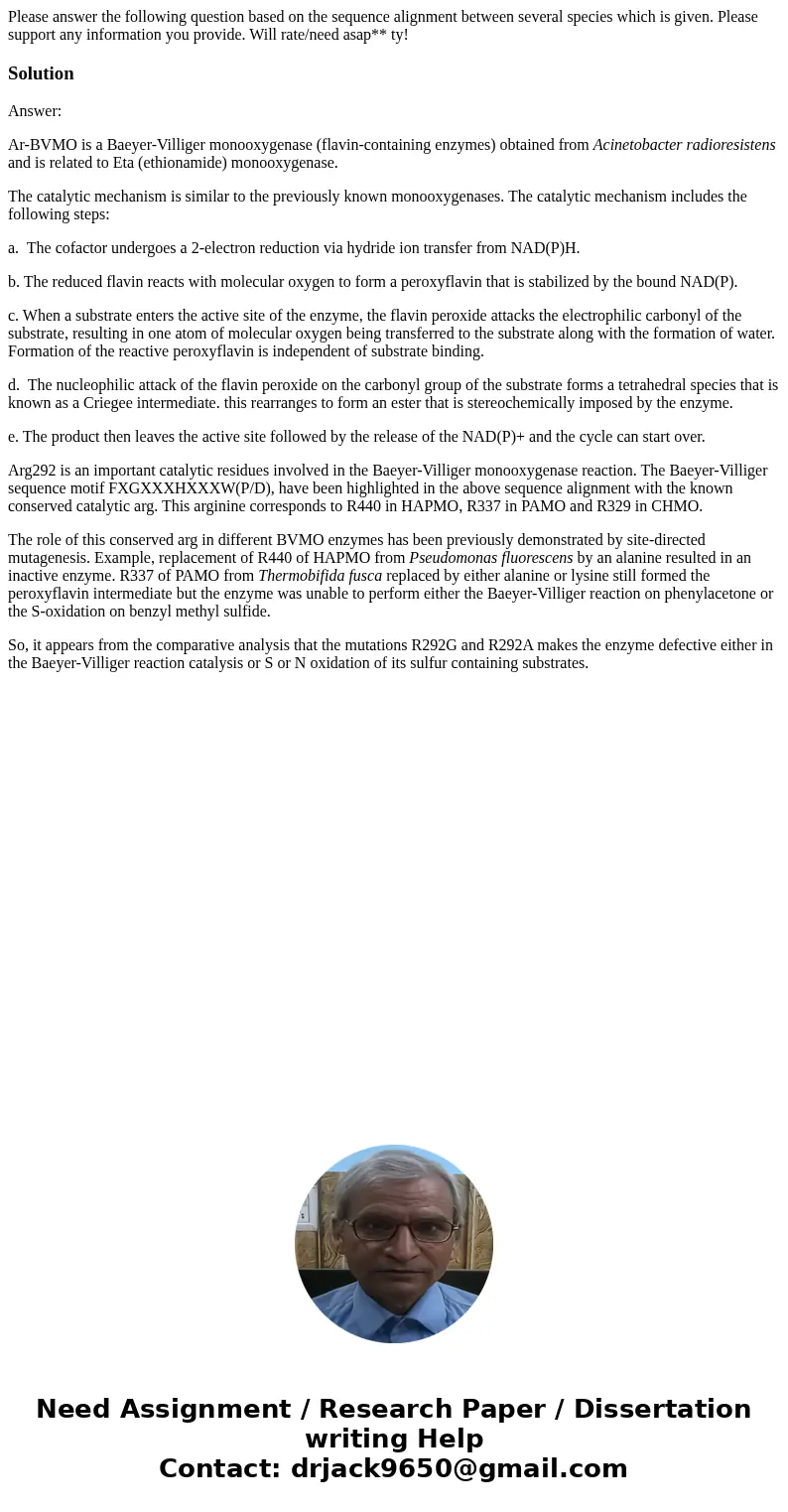Please answer the following question based on the sequence a
Please answer the following question based on the sequence alignment between several species which is given. Please support any information you provide. Will rate/need asap** ty!
Solution
Answer:
Ar-BVMO is a Baeyer-Villiger monooxygenase (flavin-containing enzymes) obtained from Acinetobacter radioresistens and is related to Eta (ethionamide) monooxygenase.
The catalytic mechanism is similar to the previously known monooxygenases. The catalytic mechanism includes the following steps:
a. The cofactor undergoes a 2-electron reduction via hydride ion transfer from NAD(P)H.
b. The reduced flavin reacts with molecular oxygen to form a peroxyflavin that is stabilized by the bound NAD(P).
c. When a substrate enters the active site of the enzyme, the flavin peroxide attacks the electrophilic carbonyl of the substrate, resulting in one atom of molecular oxygen being transferred to the substrate along with the formation of water. Formation of the reactive peroxyflavin is independent of substrate binding.
d. The nucleophilic attack of the flavin peroxide on the carbonyl group of the substrate forms a tetrahedral species that is known as a Criegee intermediate. this rearranges to form an ester that is stereochemically imposed by the enzyme.
e. The product then leaves the active site followed by the release of the NAD(P)+ and the cycle can start over.
Arg292 is an important catalytic residues involved in the Baeyer-Villiger monooxygenase reaction. The Baeyer-Villiger sequence motif FXGXXXHXXXW(P/D), have been highlighted in the above sequence alignment with the known conserved catalytic arg. This arginine corresponds to R440 in HAPMO, R337 in PAMO and R329 in CHMO.
The role of this conserved arg in different BVMO enzymes has been previously demonstrated by site-directed mutagenesis. Example, replacement of R440 of HAPMO from Pseudomonas fluorescens by an alanine resulted in an inactive enzyme. R337 of PAMO from Thermobifida fusca replaced by either alanine or lysine still formed the peroxyflavin intermediate but the enzyme was unable to perform either the Baeyer-Villiger reaction on phenylacetone or the S-oxidation on benzyl methyl sulfide.
So, it appears from the comparative analysis that the mutations R292G and R292A makes the enzyme defective either in the Baeyer-Villiger reaction catalysis or S or N oxidation of its sulfur containing substrates.

 Homework Sourse
Homework Sourse